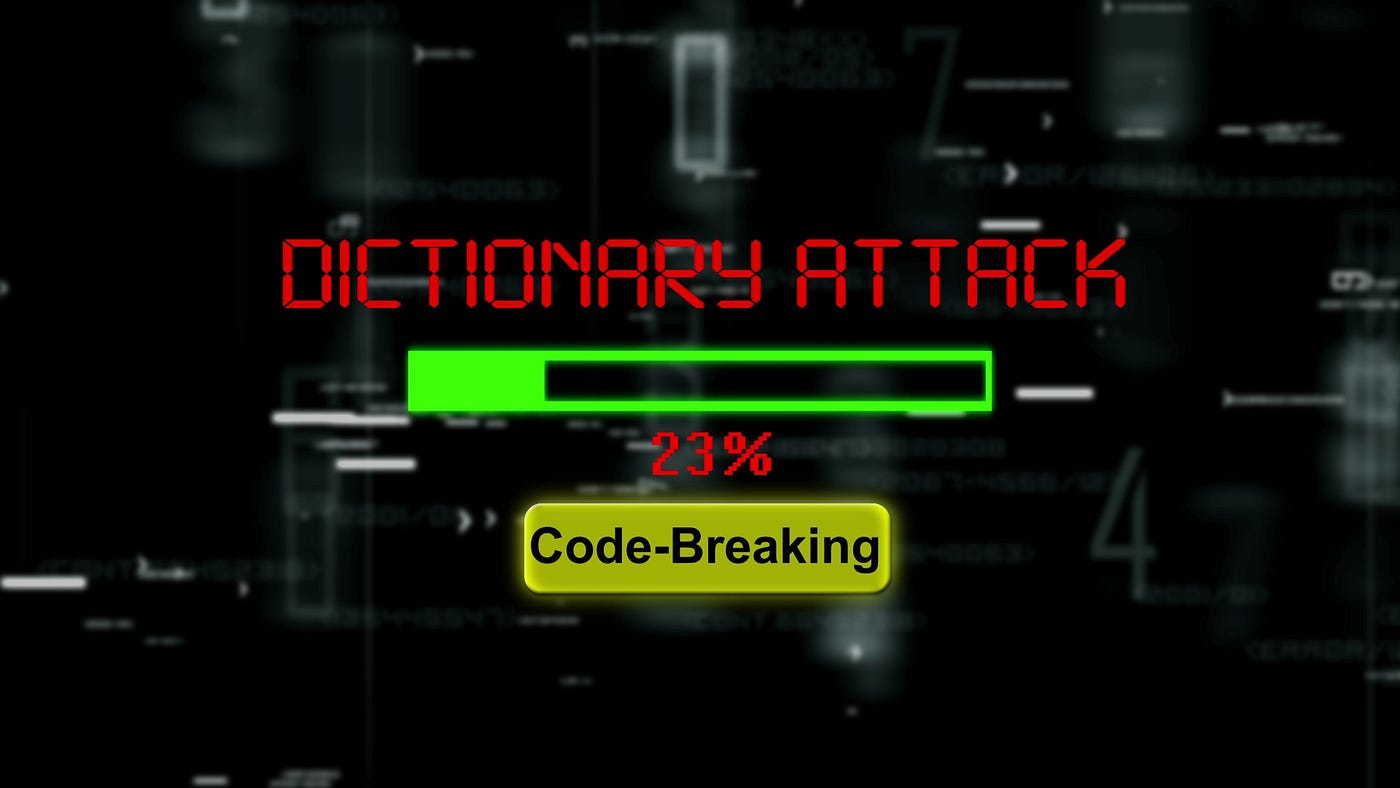Most people know the importance of good online security practices, yet they often don’t fully apply them, leaving themselves open to dictionary attacks. Despite understanding the need for strong account protection, many fail to follow basic guidelines, such as creating strong passwords. A Google study revealed that around 65% of people reuse passwords across multiple accounts, while 59% use personal information, like pet names or birthdates, that are easy to guess.
Additionally, people often choose simple, obvious passwords that are easily cracked. Studies have found that common sequences like “123456” and “qwerty,” as well as phrases like “Password,” “iloveyou,” and “Welcome,” are frequently used and regularly show up in data breaches.
广告
This suggests that these attacks are common and effective because many people don’t take dictionary attack prevention seriously.

What is a Dictionary Attack?
A dictionary attack is a simple type of brute force attack in which hackers try to guess a user’s password by rapidly cycling through a list of common words, phrases, and number combinations. Once the attack successfully cracks the password, the hacker can then gain access to the victim’s bank accounts, social media profiles, and password-protected files. This is when the situation can become a serious issue for the victim.
广告
How does a dictionary attack work?
This type of hacking employs a systematic approach to cracking passwords, typically involving three key steps. Understanding these steps can be helpful in preventing a dictionary attack.
First, the attacker creates a predefined list of potential passwords—a brute-force dictionary—comprising combinations of popular words and numbers.
Next, automated software uses this dictionary to attempt to hack into online accounts.
Once the dictionary attack successfully breaches a vulnerable account, the hacker exploits any sensitive data within the profile for personal gain. This could involve committing fraud, taking malicious actions, or accessing accounts for financial benefits.
To compile the list of potential passwords, the attacker often includes common pet names, well-known pop culture characters, or major sports teams and athletes. Many people use such familiar words to create passwords that are meaningful and easy to remember. The list usually includes variations, such as different word combinations or the addition of special characters.
Using automated tools to run this list significantly increases the chances of a successful dictionary attack. The combination of a password list and automated tools allows hackers to attempt to crack passwords and infiltrate online accounts much faster. If done manually, the process would take too long, giving the account owner or system administrator time to detect the attack and implement defensive measures.
Due to their nature, dictionary attacks typically do not target specific individuals. Instead, they are conducted in the hope that one of the passwords on the list will be correct. However, if an attacker aims to breach a particular location or organization, they may create a more focused and localized list of words. For example, if the attack is planned for Spain, they might use common Spanish words instead of English. Or, if targeting a specific company, they may use words associated with that organization.
What is the Difference Between Brute Force and Dictionary Attack?
| Type of Attack | Description | Efficiency | Number of Combinations | Success Rate |
|---|---|---|---|---|
| Dictionary Attack | Uses a predefined list of words to systematically try and crack account passwords. | Generally more efficient due to fewer combinations to try. | Far fewer combinations than brute force attacks. | Higher chance of success due to targeted approach. |
| Brute Force Attack | Tries every possible combination of letters, symbols, and numbers without using a preset list. | Less efficient because it involves running through a vast number of combinations. | For a 10-character password, approximately 3.76 quadrillion possible combinations. | Higher probability of eventually finding the right combination due to exhaustive approach. |
How to prevent dictionary attacks
Understanding what a dictionary attack is and how it works is a crucial step towards preventing such attacks. For those serious about preventing dictionary attacks, the following tips can be effective:
- Avoid Passwords Where Possible: The most effective way to avoid dictionary attacks is to eliminate passwords altogether. Use password-free authentication methods and biometric logins when available to secure your accounts.
- Use Random Passwords: Avoid using passwords based on personal information like birthdates or pet names, which can be easily guessed. A password manager can help generate, store, and input secure, random passwords.
- Avoid Common Combinations: Many people use simple, easily guessed passwords like “Summer2024” or “1234qwerty.” These are particularly vulnerable to dictionary attacks, which are designed to crack such predictable passwords.
- Choose a Passphrase: Create passphrases rather than simple word and number combinations. Passphrases are more difficult to guess and easier to remember. For instance, a gardening enthusiast might use the passphrase “BloomingGardenInSpring” and enhance it with random numbers and symbols, such as “Bl00m!ngG@rden#In5pr1ng!”
- Use Two-Factor Authentication: Implement two or more factors of authentication for each login. For example, combine a password with a one-time password generated by an authentication app and a fingerprint.
- Try Authentication Apps: Use authentication apps instead of or alongside passwords whenever possible. These apps, which can be downloaded to a mobile phone, provide randomly generated one-time passwords for each login attempt.
- Limit Login Attempts: Enable features that restrict the number of login attempts within a specific time period on websites and apps to reduce the risk of dictionary attacks.
- Force Password Resets: Reduce the likelihood of a successful attack by requiring password resets after a set number of failed login attempts. If automatic resets aren’t available, set up notifications for failed login attempts so you can manually change your password if suspicious activity is detected.
- Avoid Common Words: Steer clear of using common words in your passwords to add an extra layer of security.
常见问题
What is a dictionary attack?
A dictionary attack is when hackers try to guess passwords using a list of common words and phrases until they find the right one.
How does a dictionary attack work?
Attackers create a list of common passwords, use software to test each one, and gain access if they find a match.
What’s the difference between a dictionary attack and a brute force attack?
Dictionary attacks use a list of common passwords, making them quicker and more targeted. Brute force attacks try all possible combinations, which is slower but can crack more complex passwords.
结论
Understanding and preventing dictionary attacks is crucial for maintaining strong online security. By avoiding common passwords, using unique passphrases, and implementing additional security measures like two-factor authentication, you can significantly reduce the risk of falling victim to these attacks. Taking these steps will help protect your personal information and keep your accounts secure from unauthorized access.
广告


